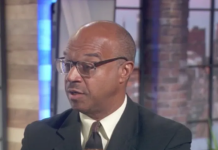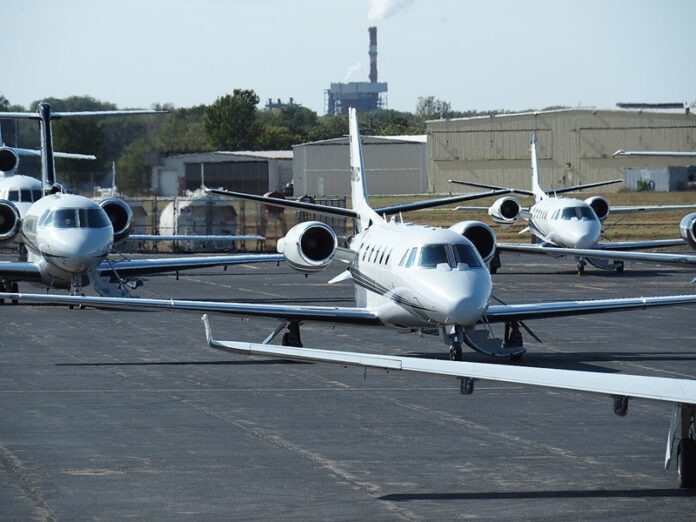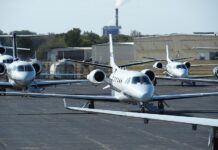The pavement at the Augusta Municipal Airport was so bad that when a Cessna Citation jet landed last year, the pilot thought the aircraft had blown a tire.
The plane landed safely, although it could have easily crashed or suffered costly damage because the runway was in such poor condition.
It was an anecdote that the state’s new aviation director – once the manager of the Augusta airport – related to lawmakers Thursday as he presented a new report outlining the needs of the state’s 109 airports.
The assessment concluded that the state needs $33 million more a year to bring airport pavement up to satisfactory condition without accounting for other airport needs across the state.
Further, the report identified $1.3 billion in overall needs for the state airport network over 10 years along with $589.9 million in available funding from all sources – a difference of $743.8 million.
Pavement represented the largest share of those needs with the report indicating that they total $773.4 million over 10 years, including inflation costs.
Another $276.5 million was identified in the report for building preservation as well as another $144.3 million for modernizing to meet state standards.
The report was put together last year by a task force that included airport managers, construction executives, economic development officials and airport planning consultants.
Republican state Sen. Mike Petersen, chair of the Transportation Committee, said he hopes that getting the report out could help shape upcoming budget discussions.
“Pavement conditions are always serious concerns at an airport,” Petersen said.
“We saw this once before, and we had to really work hard to get them sealed up and preserved so they didn’t go bad quickly,” he said.
The new report assigned pavement ratings to airports across the state on a scale of 0 to 100 with anything 65 and above considered in “good” condition, meaning that the runways, taxiways and aprons are safe and maintenance is cost effective.
Anything below 65 means the runways, taxiways and aprons are starting to deteriorate and will cost exponentially more to be rehabilitated.
Anything 40 or below means the pavement’s unsafe for regular use with ruts and large chunks of debris. Reconstruction of these facilities is lengthy and costly.
Statewide, airports have rating of 62.8. Other smaller Kansas airports that do not qualify for federal funds had a rating of 48.7.
Ray Seif, aviation director for the Kansas Department of Transportation, said the state would need $33 million more a year if it sets a goal of maintaining the 65 pavement rating.
State law requires the state to put $5 million a year into its airport improvement program, although the transportation secretary has the authority to increase that amount.
The Transportation Department put an extra $5 million into the program for the current fiscal year, although that does little to meet airports’ needs.
Last year, the state received 153 applications totaling $66 million and handed out just $11 million for 66 projects.
In 2022, the state received 145 applications for $78 million in projects and awarded about $5 million for 36 projects.
Scott Wagner, the airport manager in Lawrence and board president of the Kansas Airports Association, said the current statutory funding level of $5 million isn’t sufficient.
“It’s not making a dent in the improvements that are needed at Kansas airports,” he said.
“I can spend $5 million on just one project at my airport,” he said.
Wagner said he recently spent about $1 million to upgrade four taxiways, including one that had “crumbled to nothing” and presented a hazard to aircraft owners.
“It was in desperate need of fixing,” he said. “I can tell you about a half-dozen other things like that at my airport that need fixing.”
He said he had to cobble money from four separate grants, including two from the state, to get that project done.
There’s a bill pending in the Legislature that would increase funding for airport improvements to $18 million a year, although that’s likely to come in at $15 million.
Republican state Rep. J.R. Claeys of Salina said the increased funding could help airports better enable to handle emergency air ambulances service.
The new report, for instance, recommend reclassifying some local airports so they could accommodate emergency air service.
Those upgrades mean more money will be needed for expansion projects so the airports can handle air ambulance operations and the aircraft they employ.
“Overall, you’re trying to maintain air ambulance service in many areas,” Claeys said.
“I think that’s primarily the concern that’s out there, that we have airports aren’t capable of handling those types of aircraft,” he said.
















